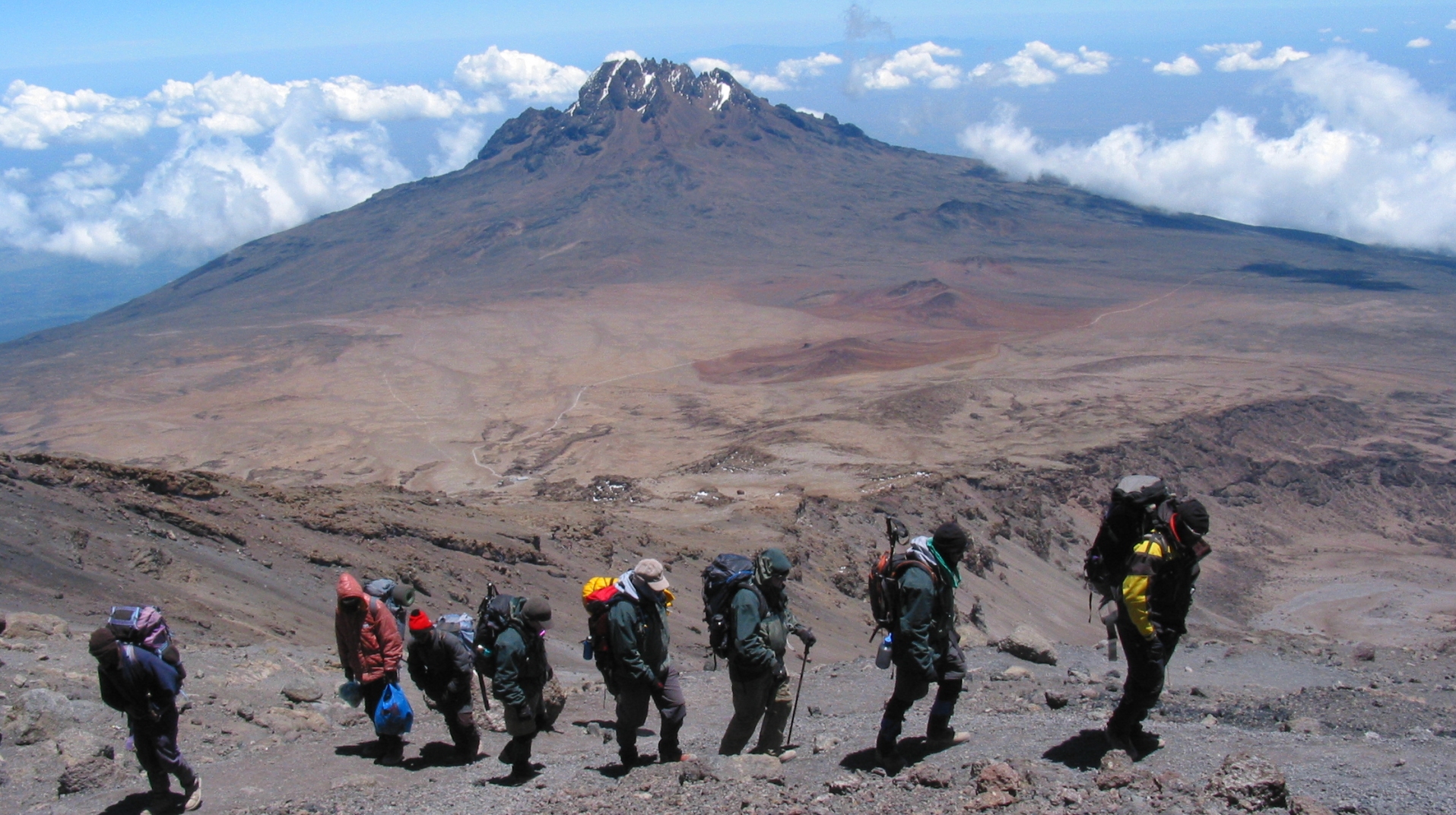International:
North America:
Menu

International:
North America:
- Home
- Kilimanjaro Climb
- Kilimanjaro Planner
- Other Treks
- About Us
- Dates + Prices + Booking
- Contact
International:
North America:

International:
Kilimanjaro, the towering giant of Africa, stands proudly as one of the world’s most alluring and challenging peaks. Scaling this magnificent mountain is no ordinary feat; it’s a journey that demands determination, strength, and an unwavering spirit. But amidst the awe-inspiring landscapes and the thrill of conquering the summit, there’s one unsung hero that plays a pivotal role in your Kilimanjaro adventure: NUTRITION!
Picture yourself on the slopes of Kilimanjaro, the air growing thinner with every step, your heart pounding with exhilaration. In this battle of human will against nature’s might, your body is your greatest ally. To unleash its full potential, you need fuel that’s not just abundant but also packed with the right nutrients. This is where the importance of nutritious and well-planned meals shines through like a beacon on the mountainside.
Ascending Mount Kilimanjaro is a remarkable undertaking that demands more than the average hiking experience. As you gain elevation, the reduction in air pressure and oxygen levels presents a formidable challenge. Altitude sickness, with symptoms like headaches, nausea, and dizziness, can feel like an uphill battle against the mountain itself.
But don’t worry, because strategic nutrition can be your ally in this conquest. Complex carbohydrates, such as whole grains and legumes, serve as a reliable source of sustained energy, essential for acclimatizing to the high altitude. Lean proteins play a pivotal role in muscle repair and growth, while healthy fats supply the endurance needed for demanding ascents.
This journey will be tough, but remember, you are equipped with the knowledge and resources to emerge victorious. With the right dietary approach, you can harmonize your body’s performance with the challenging environment of Kilimanjaro, making your ascent not only possible but truly triumphant. Trust in your preparation, your expertise, and an expert mountain kitchen and you’ll overcome this extraordinary challenge.

On Kilimanjaro, water is your lifeline. Dehydration can intensify the symptoms of altitude sickness and decrease your performance. You might not feel as thirsty in the cold mountain air, but that doesn’t mean your body doesn’t need water. Hydration is non-negotiable.
Aim to drink at least 3-4 liters of water per day while on the mountain. It’s a simple rule that can make a world of difference in your ability to acclimatize and maintain your energy levels. Hydrate intelligently with warm herbal teas or soups to combat the chill and boost your morale.
Your journey to Kilimanjaro’s summit begins with a hearty breakfast. Picture this: a steaming bowl of oatmeal topped with nuts and dried fruits, or a scrambled egg wrap with vegetables. These meals are designed to kickstart your metabolism and provide you with sustained energy throughout the day.
By starting your day with a balanced breakfast, you’ll be ready to tackle the ever-ascending trails of Kilimanjaro with gusto. The complex carbohydrates in oatmeal and the protein in eggs will keep you fueled and focused as you ascend to greater heights.
As you continue your ascent, you’ll find that your energy reserves start to dwindle. This is where trail snacks come into play. Think of them as your pocket-sized power-ups, giving you a quick boost when you need it most.
Nuts, dried fruits, and energy bars are excellent choices. They’re lightweight, packed with nutrients, and easy to consume on the go. These snacks provide a quick source of energy to keep you moving forward and prevent the dreaded “bonk” that can stall your progress.
Midday, it’s time to refuel with a hearty lunch. A balanced meal with a mix of carbohydrates, proteins, and fats is ideal. Lunch isn’t just about satisfying your hunger; it’s about replenishing the nutrients your body has been burning through the morning. The protein in chicken or lentils helps repair and build muscle, while the carbohydrates from quinoa or rice provide a sustainable source of energy.
As the sun sets over Kilimanjaro’s slopes, it’s time for a nourishing dinner that aids in recovery. You should be eating meals that are rich in protein, paired with complex carbohydrates.
This is the time when your body goes to work repairing itself, and it needs the right building blocks to do so. A well-planned dinner ensures you wake up the next day feeling refreshed and ready to take on the mountain once more.
The night before your summit attempt, you’ll need a meal that provides both energy and warmth. A bowl of hot soup or a pasta dish can work wonders. These options not only fuel your body but also help raise your core temperature, preparing you for the frigid temperatures awaiting you at the summit.
When the time comes to make your final ascent, you’ll be grateful for the nourishing meals that have powered you through your Kilimanjaro adventure. You’ll find yourself reaching the rooftop of Africa with strength, determination, and an exhilarating sense of accomplishment.
Tusker Trail has engaged the Culinary Institute of America to train their esteemed mountain chefs, and design the perfectly planned menu for Kilimanjaro. By doing so, Tusker Trail ensures that your climb is fueled for the long and challenging hikes up and down the mountain.
In the epic tale of your Kilimanjaro conquest, nutrition is the unsung hero that paves the way for your triumph. It’s the secret weapon that empowers you to face the altitude, the cold, and the relentless ascent with unyielding resolve. So, as you prepare to embark on this unforgettable journey, remember the importance of nutritious and well-planned meals. They’re the recipe for summit success, ensuring that you not only conquer Kilimanjaro but do so with strength and vitality, making every step of your adventure truly legendary!
READY FOR ADVENTURE?